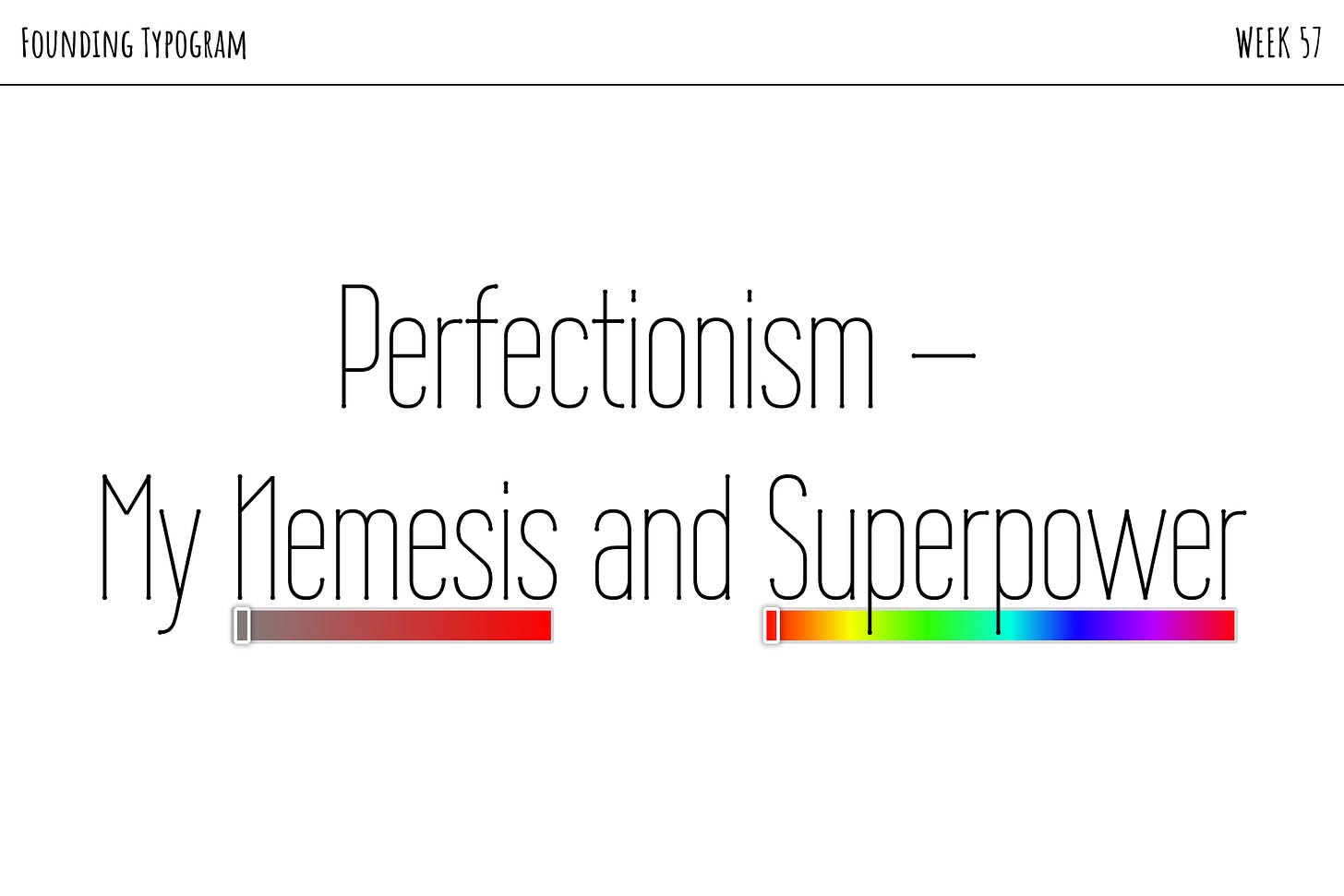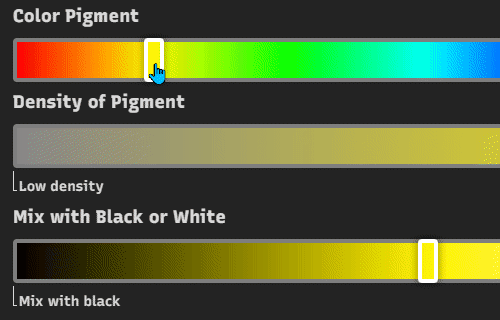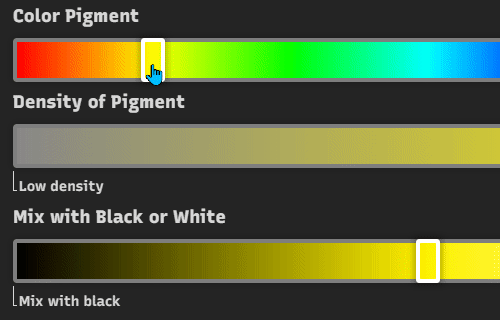Perfectionism — My Nemesis and Superpower
Week 57 of Founding Typogram
Hi, I am Wenting. I quit my job at Adobe to build a startup, Typogram, a logo design and editing tool for startup founders. This is my weekly newsletter documenting my journey from the start on Aug 2nd, 2021 till the present.
One of the many joys of working on my own projects is that I can get my healthy dose of perfectionism out of my system. Arguably sometimes it is not the most efficient way to “business,” but we all live and work to pursue happiness, don’t we?
You must have heard of the term “pixel-perfect” at one point from a designer or said the term if you are a designer yourself. I took pride in that when I was younger and early into my career. During the later stage of my design career, however, I intentionally refrained from it. Instead, I focused on acquiring “leadership skills” and “business acumen” that fit more nicely into my senior titles. But part of me never grew “senior” in that regard; I still secretly love pixel-perfect work and took pride and joy in producing them.
The desire for pixel perfection is also a motivation for me to hone my programming skills. I feel more in control of the end result when I can write front-end code for my own design, where no detail is left out, and no pixel is off the grid when I make my design come to life. In the end, the desire to achieve pixel-perfectness has empowered me with enough programming skills to take on Typogram development as a self-taught coder. To some extent, perfectionism has changed my life for the better.
Working on brand color for Typogram was a blast. I want to share a little detail that I took pride in. I created a custom input slider for choosing the color’s hue, saturation, and lightness. However, I noticed the “slider thumb” would stop moving 4px too early than I desired:
I designed the slider’s track and thumb to have a matching 4px stroke, so when the thumb is dragged to the end of the track, their border should overlap each other seamlessly. To fix this issue, I figured out a way to render the 4px stroke of the thumb with box-shadow instead of border:
which fixes the problem:
Is it much more satisfying to use? I think so. While it is a tiny detail that usually goes unnoticed, it only gets unnoticed because it is done right. When done wrong, while it doesn’t affect usage, there is a quality lacking. It is like stitching to your handbag or clothes — bags are not going to fall apart because of wobbly stitching, but it signals bad quality and cheapens the product.
Hear from You
Perfectionism helped me tremendously during the early stage of my design career. It made me a better designer and helped me quickly get promoted to senior titles. However, it began to hurt my chances of getting into higher leadership roles in the later stages, especially in the context of a big corporate. On the other hand, it motivated me to get into programming and, as a result, made Typogram a possibility, which has changed my life for the better. In many ways, perfectionism is both my nemesis and superpower. Is there a trait of you, perfectionism or otherwise, that you consider both your nemesis and superpower? I am keen to hear your answers!
❧
See you next week! If you have friends who are interested in founding startups, please consider sharing my newsletter with them!




